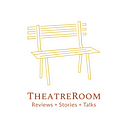Social media is no longer virtual, it is a reality of life: Chanakya Vyas
The playwright-director’s new Hindi play ‘Jhund’ is opening at the Ranga Shankara Theatre Festival 2021

By Reema Gowalla
Two strangers, a confined space, tampered phones and a looming threat to humankind. These set the premise for Bengaluru-based Indian Ensemble’s latest production, ‘Jhund’. The hour-long Hindi play will be premiering on October 29 at the Ranga Shankara Theatre Festival 2021, the theme of which is ‘staying alive’.
The two-actor piece, featuring Ashwini Kumar Chakre and Vivek Vijayakumaran, focusses on how navigating social media became a task for many during the pandemic — traversing the freedom it allows and the authority it imposes on us. Chanakya Vyas, who has written and directed the play, tells us more about it. Excerpts:
Two plays inspired the story of Jhund
Compared to the research done and time spent on the making of my past works — including ‘Algorithms’ and ‘Once There Was A Lake’ — ‘Jhund’ was conceptualised and created within a very short period. During the pandemic, I have often engaged with online space and all the new things that it has introduced us to, but there was definitely the urge to make a play for the physical space. So, when Arundhati Nag approached me to come up with a Hindi play for this year’s festival, I was more than thrilled.
The story of ‘Jhund’ is influenced by two main sources — Ashok Mishra’s Hindi translation of Sławomir Mrożek’s play ‘Striptease’ and Ghanshyam Desai’s Gujarati short story ‘Todu’ (‘The Crowd’). ‘Striptease’ revolves around two characters who have been forced into a closed room, while they are trying to escape from an unknown and dangerous occurrence outside. Meanwhile, ‘Todu’ is written as a first-person narrative. It traces the life of a character who witnesses a crowd taking different shapes moving from one end to the other, controlled by the voice of an unseen authority.
Some time in October last year, Sunil Shanbhag had shared with me a handwritten copy of the translated script of ‘Striptease’, which was written some 25 years ago. Although I had read this play before, this was the first time I could emotionally connect with the narrative. ‘Todu’, on the other hand, has a surreal element to it which has always intrigued me. I somehow wanted to merge these two texts into a play, but given the fact that both were written at a different time, bringing them into the present context had to be done thoughtfully.
‘Jhund’ investigates the ‘inside-outside’ premise — that about staying indoors for a prolonged period and the imagined fears of the outside world. And how such fears turned into a sort of paranoia for many people in times of Covid.
The cryptic and controlling world of social networking
Even though the idea of bringing together the two texts into a new script was a little vague in the beginning, I was fortunate to have a team that was determined to work on it. The positive energy we collectively shared was the main driving force behind the creation of this piece. The process began with the reading of the first draft together, while I also individually discussed it with Abhishek Majumdar and Anmol Velani, who had previously worked on a play by Mrożek. In fact, Anmol helped me conceptualise the play — delving deeper into the context of ‘inside and outside’ as well as the types of freedom.
On October 1 this year, we went into rehearsal and finalised jhund as the title of the play. The word became a metaphor for social media, which is no longer a virtual space but a reality of our life. It’s both interesting and baffling to realise that although the social network is a free entity, everything within it is monitored and controlled. And this authority it enjoys is given by no one else but us, albeit unknowingly. The play tries to decode this cryptic world in its own unique style.
Technology as a fabric of the narrative
I have never treated technology as a separate element; it has always been a part of the fabric of my plays. The theatre, I think, should always make sense in the times we live in. It’s a medium that has a certain immediacy to it. That said, there is also a bit of risk involved in the articulation of time in a play. It should never look forced. In ‘Jhund’, for instance, we do not mention the social media platforms like Facebook or Instagram, whereas the plot revolves around it.
Given the pace of privatisation, the day may not be very far away when instead of governments our states will be run by corporations. It would be interesting to see what role technology would play at that time. The concepts of state, authority, technology and social media are intertwined with our everyday life. And because these thoughts are always in the back of my mind, they inadvertently slip into my work as well. ‘Jhund’ is not an analysis of social media, but just stating how the virtual world by itself can become an unsafe place for us. While it allows us a platform to voice our thoughts freely, social media can also turn very controlling at times.
‘Jhund’ is produced by Shubham Roy Choudhury. Sridhar Murthy has done the set design for the play, while light design is by Niranjan Gokhale and Arghya Lahiri and costumes are by Aloka Gloria D’souza. Mohammed Lehry is in charge of sound; Shatarupa Bhattacharyya and Ankita Jain are the production managers.
The show is slated to take place on October 29 (7 pm) at Ranga Shankara. You can book your tickets here.

